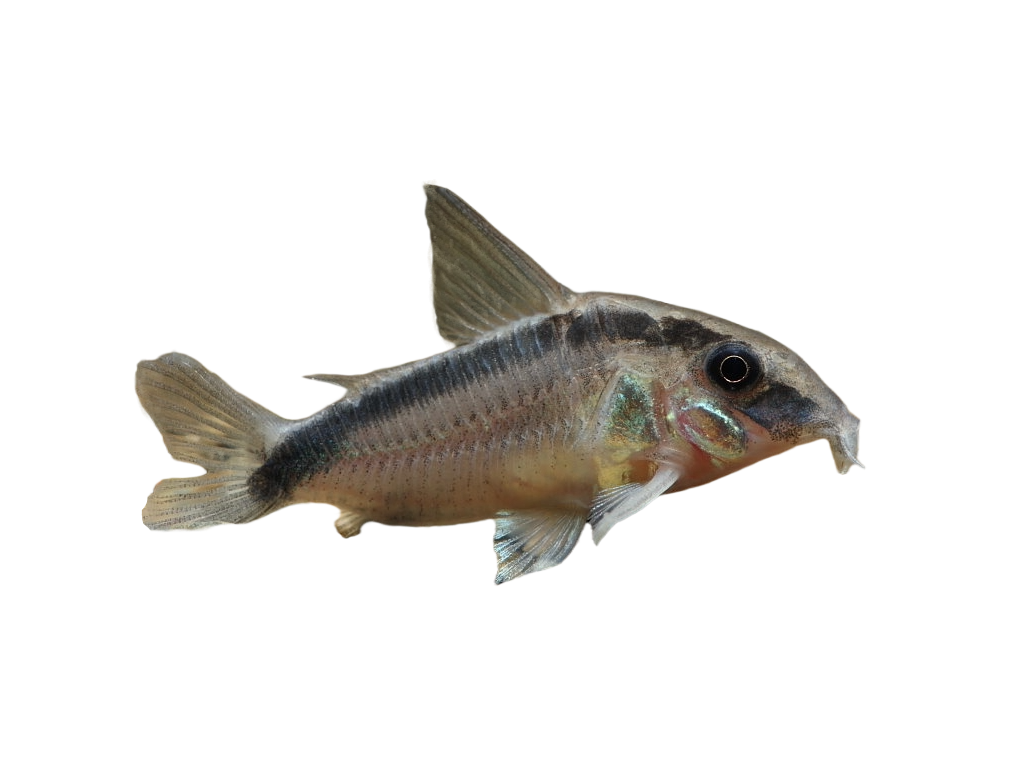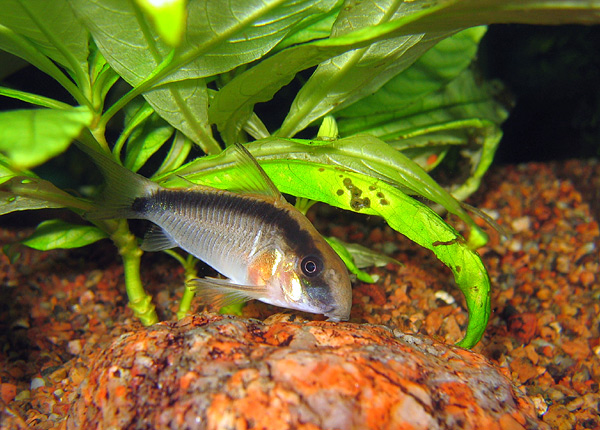Skunk cory
Corydoras arcuratus

Can breathe air through their intestines
As the Swedish name pansarmal (armoured cory) suggests, the skunk cory and its relatives have hard, armour-like scales that protect them from enemies. In addition, it has venomous fin spines. Their sting is not dangerous to humans, but can be very painful. The skunk cory lives in small shoals, at the bottom of running streams. There they look for food in the bottom material. But the skunk cory also has an exciting adaptation to be able to live in more stagnant, oxygen-poor waters! The fish’s intestine has the ability to absorb oxygen, therefore the skunk cory can swim up to the surface and swallow air, in order to be able to absorb oxygen from the air in its stomach.

Photo: Pia-Helminen-CC-BY
Fertilises 2-4 eggs at a time
When the skunk cory is about to reproduce, the female holds 2-4 eggs between her pelvic fins and allows the male to fertilise them for about 30 seconds. Then they swim to lay them on vegetation in the water where they stick. Afterwards they repeat the same procedure, until the female has laid about 100 eggs! The eggs hatch after about a week, leaving the fry to fend for themselves.

Photo: AquaTuer-CC-BY-SA
Belongs to the Corydoras group
The skunk cory gets its name from a black stripe on its light-coloured body, which with a bit of imagination can resemble the fur of a skunk. The fish belongs to the genus Corydoras, corys, which is a very large group of fish with about 160 species described so far. All skunk corys in the genus Corydoras live in the freshwaters of South America, and although the species differ greatly in appearance, it is a group of very small fish. The smallest cory is about 2.5 cm long, and the largest species does not grow much larger than 12 cm.
Distribution worldwide
Amazonas.

Threat based on the Red List

Trade regulations
CITES: Not listed.